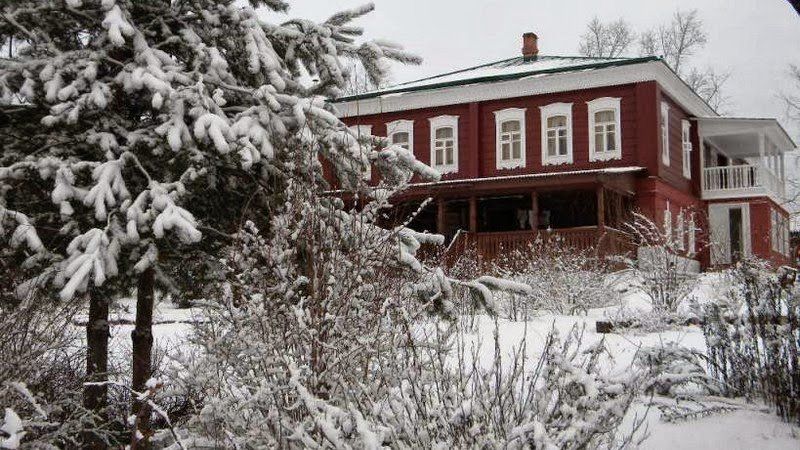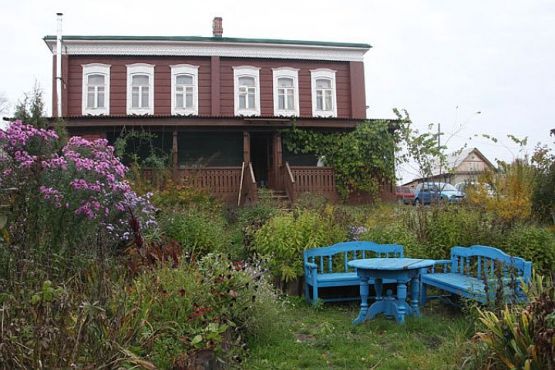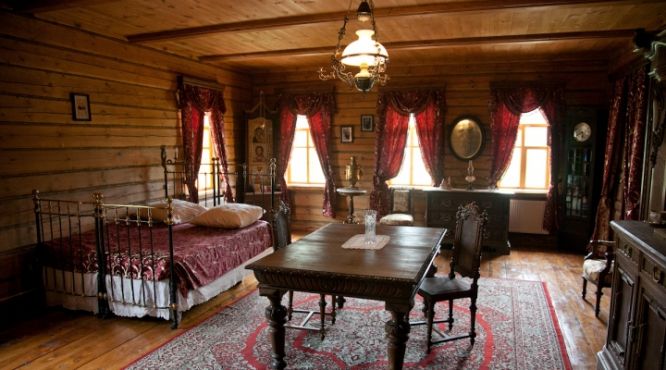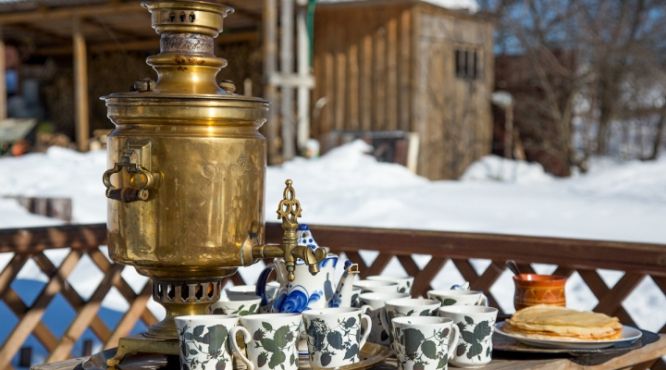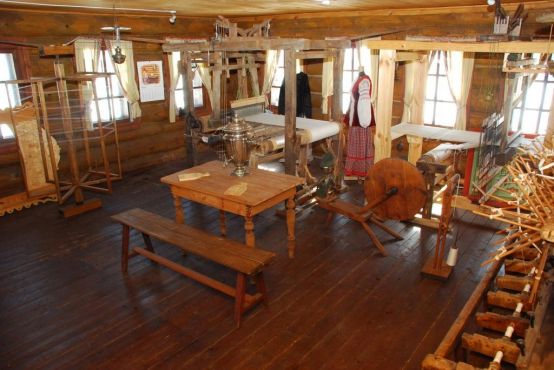Manor of the factory owners Dumnovs in the village of Zarechye (Kirzhach district)
- Address:
- Kirzhach District, Zarechye Village, Central Street, 19
- GPS:
- 55.99788076, 38.60040306
- Phones:
- +7 (916) 134-31-72
The Dumnovs’ Manor is the only museum complex in Russia reflecting the history of hand silk and velvet weaving. This unique trade was distributed in the 19th century in the former Pokrovsky county of Vladimir province and had no analogues in other regions of Russia.
In the middle of the 19th century, Ivan Fadeevich Dumnov was one of the first to establish silk velvet, plush and various silk fabrics in Zarechye (Kirzhach District of the Vladimir Region). This extraordinary beautiful handmade silk velvet was delivered to the most expensive shops in Moscow, St. Petersburg and even the royal court.
Manual machines were installed in so-called "light factories" – peasant's houses with a large number of windows to make it lighter. It is interesting that each window consisted not of the usual two or four glasses, but of a large number of small cells. This was explained by a reasonable economy: the spindle often broke, fell into the window, and not to change each time expensive glasses entirely, they were prudently divided into fragments. In the village almost every house was engaged in silk weaving. As a rule, the whole family weaved – men, women, old people and children.
The factory owner Ivan Dumnov together with his brothers actively engaged in charity. On their funds a beautiful temple of the Kazan Icon of the Mother of God was built over the river Cherna in Zarechye. The Dumnovs donated tithes for the construction of a school, a rural hospital, and kept them. I.F. Dumnov, being the guardian of the school, wrote textbooks on mathematics for students. The poor have never been denied assistance. For large donations, I.F. Dumnov received a merchant's title and a silver medal of the Synod.
Dumnov's weavers supplied with silk and velvet almost the whole of Russia. But after the revolution, it turned out that luxurious thin materials became alien to the people, and the production was redesigned to artificial plush and lining fabrics.
Today, actually disappeared trade, silk and velvet weaving is still an integral part of the history of the Vladimir region, and an important component of its cultural and historical heritage. So, the Museum-Manor of the Dumnovs silk factory owners was created thanks to the enthusiasm of the famous doll artist, great-granddaughter of I.F. Dumnov, Galina Maslennikova. Having bought her family home from the state more than 10 years ago, she restored it with historical accuracy, using family documents, stories and gifts of the oldest inhabitants of the village and working for several years in the archives of Vladimir, Kirzhach and Moscow. With the help of sponsors and with the assistance of the Vladimir-Suzdal Museum-Reserve, the Maslennikov family managed to bring the estate in order, recreate the old interiors, break up the garden and assemble a collection of exhibits dedicated to the unique craft that the village of Zarechye was famous for.
The idea of G. Maslennikova was supported by the residents of Zarechye. They willingly gave antiquities to the museum collection – in almost every house in the attic, a historical object like grandmother’s spinning wheels, parts of looms, various old utensils, was still on hand. Something was found in other villages, bought from antique dealers. Today the museum is proud, for example, of having an extremely rare hand loom.
On the territory of the manor there is a copy of the traditional for the village log "light-factory", where the whole process of creating silk fabrics on the basis of operating manual equipment is presented. According to the rules that existed in olden times, this factory "workshop" stood aloof from residential buildings – there was too much noise from weaving. It was this circumstance that saved the most valuable part of the museum exposition from the fire, which the estate survived in 2009.
Here is a collection of samples of ancient silk and velvet fabrics of the 19th century and rare women's clothing, sewn from them. In the "light-factory" there are also objects of peasant life of rural weavers of the 19th century. On the second floor there is an exhibition of author's ethnographic dolls of Galina Maslennikova united by a single story on the life of the Russian village. The dolls support the common style of the estate – ruddy peasant men and women in bright suits of different regions of Russia.
In addition, in the old manor house, which today also works as a guest house, visitors become participants in a kind of historical reconstruction of Russian life. They can " be on a visit " to the hospitable family of the Dumnovs, taste delicious soups and pies, buckwheat porridge with mushrooms cooked in a Russian oven, drink tea from a samovar with fragrant herbs collected in the surrounding meadows, steam up in a Russian bathhouse, work on a loom, listen to songs of peasant girls-weavers.
 Tourism portal of the
Tourism portal of the